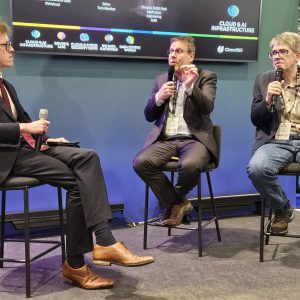
Microsoft has rolled out a host of new capabilities at Microsoft Build this week in Seattle. Many are intended to help developers use its Azure and Microsoft 365 offerings as a foundation for Artificial Intelligence (AI)-powered applications.
It also open sourced its Azure Internet of Things (IoT) Edge Runtime suite – a toolkit that brings AI, Azure services and custom apps to IoT devices – and announced a series of partnerships that emphasise the growing importance of IoT to the company.
“The era of the intelligent cloud and intelligent edge is upon us,” said Satya Nadella, CEO of Microsoft, at Microsoft Build 2018 in Seattle. “These advancements create incredible developer opportunity and also come with a responsibility to ensure the technology we build is trusted and benefits all.”
The company announced the launch of Custom Vision; a cognitive service available for the edge, so developers can build apps using AI algorithm’s for edge devices. Microsoft also plans to expand its announcements into the consumer world; using its newly announced Speech Devices SDK to improve speech recognition.
In doing so, developers will have the ability to develop voice-enabled services for things such as drive-thru ordering systems, smart assistants and smart speakers.

In raft of another announcements, Microsoft confirmed that it is partnering up Qualcomm to create a vision AI developer kit running Azure IoT Edge. This solution makes available the key hardware and software required to develop camera-based IoT solution. An agreement with drone company DJI, meanwhile, will see Microsoft roll out a software development kit (SDK) for Windows 10 PCs; bringing flight control and real-time data transfer capabilities to Windows 10 connected devices.
As part of the partnership, the two companies will co-develop services to deploy Azure IoT Edge an AI services; building new scenarios across agriculture, public safety and construction
“The DJI and Qualcomm partnerships announced at Build demonstrate Microsoft’s need for new partnerships in reaching developers for IoT applications,” Nick McQuire, VP of Enterprise Research at CCS Insight, said.
He added: “Developer experience with both AI and IoT is in its infancy but simple and integrated solutions from applications to the silicon will help many get started. Microsoft will need to continue to grow this ecosystem as key strategic area for the Azure business and to win developers.”
Ethical Investments
Investing $25 million, Microsoft also announced that it is developing a programme called “AI for Accessibility”; a five-year project that encourages developers, academics and inventors to accelerate and expand AI capabilities to strengthen human capabilities, specifically for those with disabilities.
Microsoft’s investment includes the offering of grants, technology investments and expertise to help developers in the production process.
The programme looks to focus on developing AI solutions, building on Azure Cognitive Services to enable developers to create intelligent apps that can assist those with hearing, vision and other disabilities. Specific examples include bettering the real-time speech-to-text transcription capabilities, visual recognition services and predictive text functionality.
“Ethical concerns over AI have hit fever pitch in 2018 and there is now a big push to create AI that delivers social good,” Nick McQuire emphasised.
“People with disabilities are often overlooked when it comes technology advances but Microsoft sees this as a key area as to address concerns over the technology and compete against Google, Amazon and IBM.”
Taking Operations to a Virtual World
The tech giant has also focused on mixed reality; enhancing experiences for workers using virtual and augmented reality.
Microsoft Remote Assist was announced; enabling them to work remotely with ‘heads up, hands free’ video calling, image sharing and mixed-reality annotations. Changing the working environment completely individuals will be able to work from anywhere in the world; still having the collaborative approach they would in a physical workspace.
Building on Remote Assist, Microsoft Layout was also revealed; aiming to help individuals design spaces in context using AR and VR. Workers can import 3D models to develop room layouts, experience designs as holograms and share/edit these in real-time with partners.
Each of the mixed-reality announcements enhances the way individuals work; boosting both production and outcomes for businesses, bringing together a collaborative working environment from anywhere in the world.






